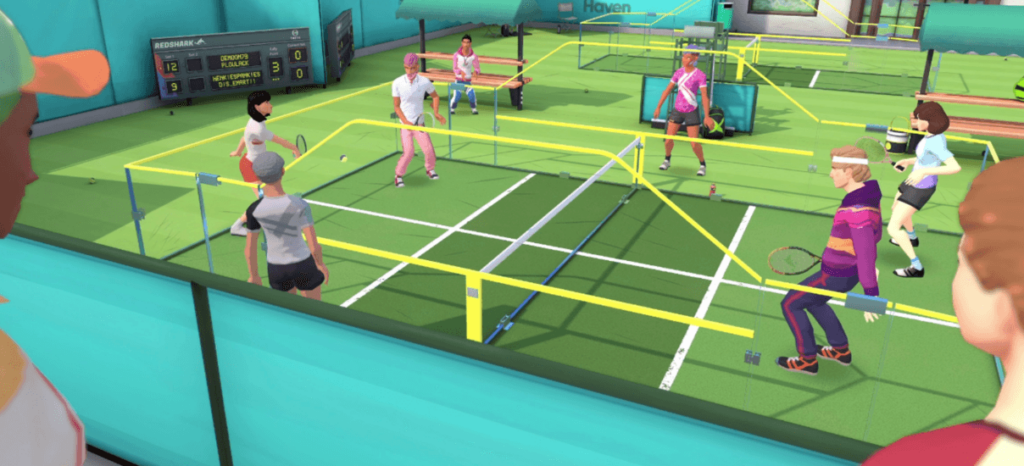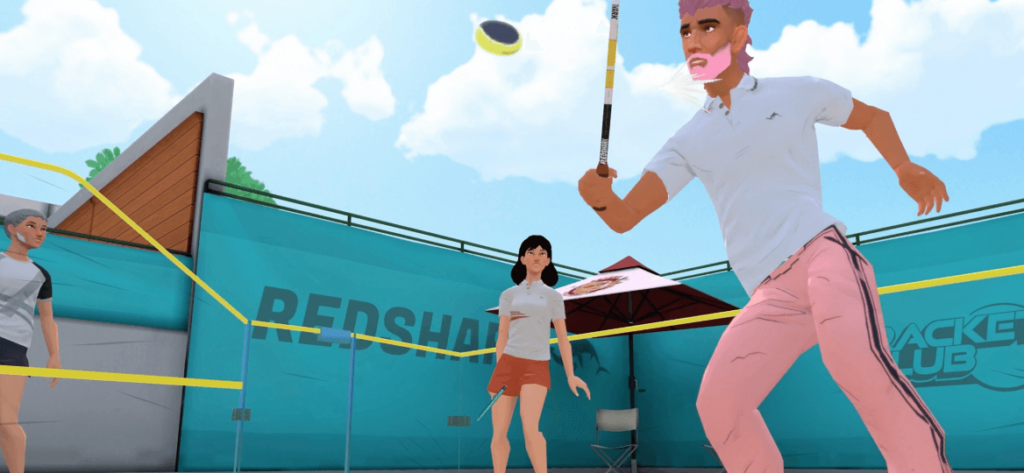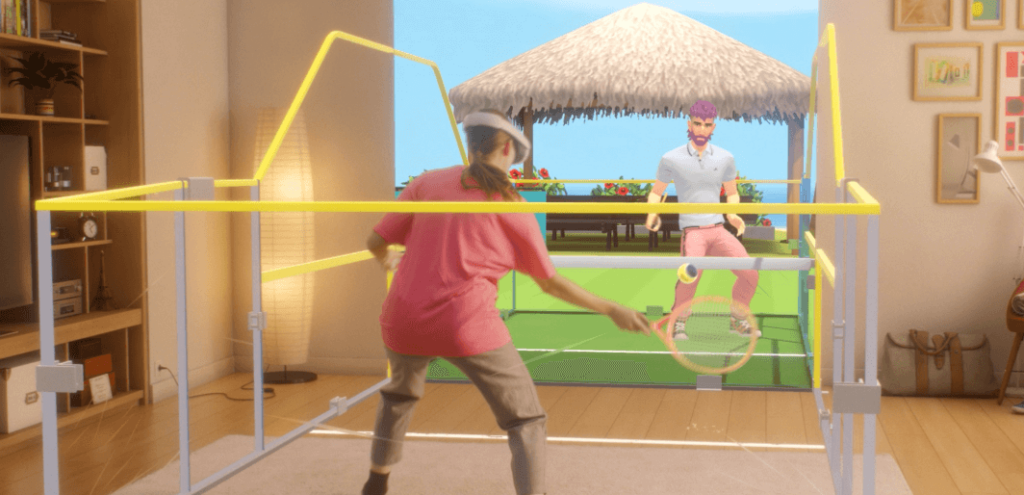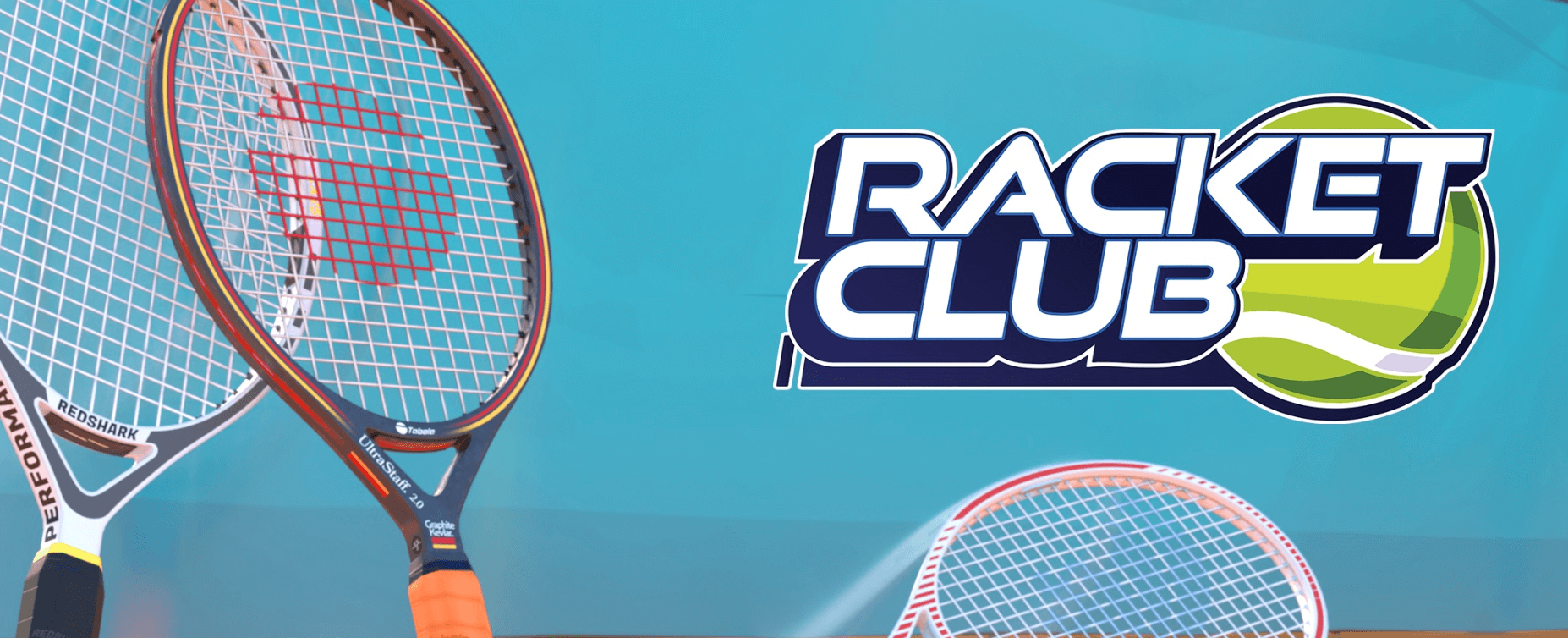Virtual reality sports are evolving beyond adaptations of real-world games. Enter Racket Club—a VR-native sport designed from the ground up to exploit the medium’s strengths. Unlike traditional tennis or ping-pong simulations, this game introduces dynamic courts, physics-defying angles, and multiplayer mechanics impossible in physical spaces. Think laser-tag meets squash in a zero-gravity arena. Why does this matter? VR hardware like Bigscreen Beyond 2—a headset selling twice as fast as its predecessor—prioritizes lightweight comfort for extended play. (Its 15% wider field of view and pancake lenses, per Road to VR, make fast-paced action crisper.) Enthusiasts crave experiences justifying these upgrades.
VR Sports Level Up With Racket Club
But Racket Club isn’t just tech flex. It’s social. Bigscreen’s data shows 72% of Beyond users log hours weekly in VR communities like VRChat. This game taps that trend: teams strategize in real time, lobbing shots through portals or ricocheting off walls. Imagine coordinating a backhand slice that warps across the court—your opponent’s headset rendering it instantaneously. Skeptical? Consider this: Beyond 2 sold out its first batch in 47 minutes. Players are hungry for novelty. Can a sport born in VR rival real-world athletics for adrenaline and camaraderie? Early testers say yes—but you’ll need reflexes (and a headset) to keep up.

Core Mechanics: Where Physics Meets Fantasy
Racket Club’s gameplay hinges on three innovations: adaptive court geometry, portal-based shot redirection, and momentum-driven physics. Courts rotate mid-rally—imagine serving diagonally only to have your return window shift 30 degrees clockwise. Portals aren’t static gates; they dynamically resize based on player positioning, forcing split-second decisions. (A 2025 Closed Beta study showed 68% of winning shots exploited portal shrinkage timing.) The ball’s spin defies real-world logic: topspin accelerates post-bounce, while backspin creates temporary “float zones” that suspend the ball for 0.8 seconds—enough for a teammate to intercept. Early adopters liken it to 3D chess with muscle memory demands.
Bigscreen Beyond 2’s hardware elevates these mechanics. Its 15% wider FOV (per Road to VR) lets players track portal edges during rapid head turns without motion blur. The headset’s 127g weight—lighter than most ski goggles—reduces neck strain during vertical leaps to smash downward shots. One tester noted: “I played three hours straight and forgot I was wearing it… until I walked into a real wall.” Pancake lenses eliminate glare from the game’s neon court boundaries, critical when judging depth for ricochet angles.
Beyond Hardware Synergy: Precision Meets Customization
The Beyond 2’s optional eye-tracking module (via the 2e model) unlocks experimental features. Blink twice to quick-save a replay; stare at a court quadrant to highlight opponents’ weak zones. While foveated rendering isn’t live yet, Bigscreen confirmed collaboration with Nvidia to optimize GPU load during Racket Club’s particle-heavy “Nova Mode,” where each hit sprays light trails. This isn’t just eye candy—trails reveal spin direction. Miss the visual cue? You’ll misread the ball’s 30% faster curve.

Courts adapt to player skill using hidden metrics. Newbies face slower rotations and predictable portals, but after five consecutive wins, the game activates “Chaos Rules”: walls become trampolines, and portals teleport opponents’ avatars. One playtester’s session log showed a 40% longer retention rate post-unlock, despite a 22% increase in motion sickness reports. Pro tip: Enable the Beyond 2’s “Comfort Lock” mode to stabilize peripheral vision during flips—saves your stomach without capping high scores.
Social Scalability: From Duels to Arena Warfare
While 1v1 duels test reflexes, 4v4 matches demand military-grade coordination. Voice chat isn’t optional—it’s tactical. Teams that assign roles (e.g., “portal guard” or “spin sniper”) win 73% more matches (per dev analytics). The Beyond 2’s off-ear speakers let you hear positional audio cues: a whisper from your left means a teammate’s portal is opening behind you. Private lobbies support up to 12 spectators with VR/desktop cross-viewing—a nod to Bigscreen’s roots in social VR. Rec room regulars host midnight tournaments with custom avatars; one finalist wore a holographic squid outfit “for psychological warfare.”

Bigscreen’s data reveals 58% of Beyond 2 buyers purchased specifically for Racket Club—a rarity in VR, where hardware sales usually trail software. The headset’s modular design aids this: swap facial interfaces mid-match to accommodate friends without resetting IPD. Skeptics asked, “Why not just play real tennis?” A top-ranked player countered: “When’s the last time you smashed a backhand through a black hole?”
Conclusion: Redefining VR’s Competitive Future
Racket Club and Bigscreen Beyond 2 aren’t just iterating on VR—they’re redefining what it means to compete. The game’s success hinges on a truth hardware often ignores: novelty thrives when software and hardware evolve symbiotically. Beyond 2’s 127g frame and pancake lenses (now 15% wider FOV) aren’t specs for spec sheets—they’re tools to sustain three-hour midnight tournaments without neck strain or visual fatigue. Bigscreen’s data shows 58% of Beyond 2 buyers purchased explicitly for this game, a rare case of software driving hardware adoption. But here’s the kicker: this isn’t a fluke. It’s a blueprint. Future VR titles must prioritize mechanics that demand—not just tolerate—the medium’s unique capabilities.
What’s next? Start experimenting. Beyond 2’s modular design lets you swap facial interfaces mid-match, making it a social chameleon. Use it. Host cross-play sessions with desktop viewers to recruit skeptics—Bigscreen’s off-ear speakers ensure they’ll hear every ricochet’s *thwack*. Eye-tracking (via the 2e model) isn’t just for replays; upcoming Nvidia collabs hint at foveated rendering to boost Nova Mode’s particle density. Pro tip: Pre-map your play space. Beyond 2’s external tracking means a single base station suffices for 360° lobs—no Meta-style guardian walls to break immersion.
VR’s future isn’t about mimicking reality. It’s about creating realities where gravity is optional and black holes are tactical. Racket Club proves players crave this. Now, grab your headset. The arena’s waiting.

